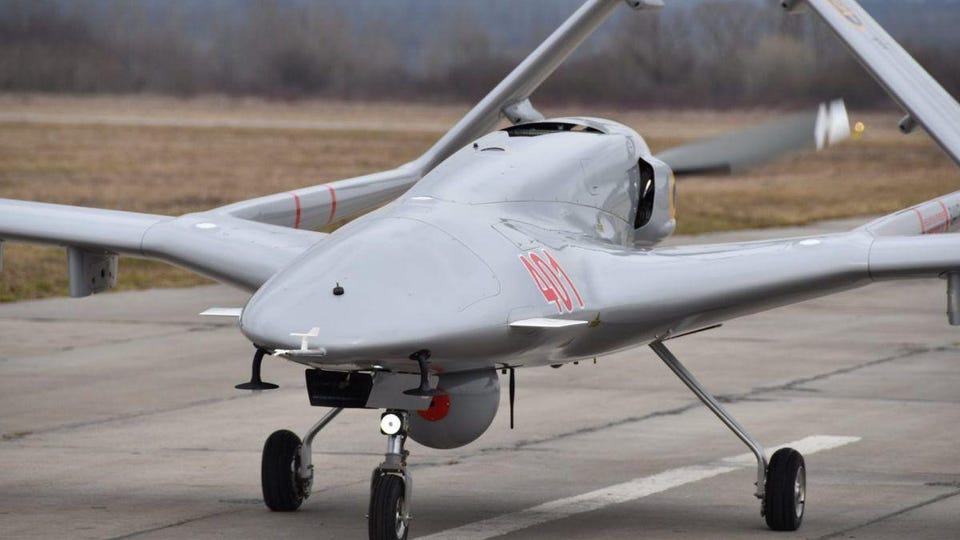Ukraine’s Turkish-made drones are blowing up Russian equipment in southern Ukraine, helping to clear a path for Ukrainian battalions as they fight their way toward Russian-occupied Kherson.
Videos that have circulated online since Kyiv announced its long-anticipated southern counteroffensive on Monday depict the 1.5-ton, propeller-driven Bayraktar TB-2 drones striking a Russian mortar team and a self-propelled howitzer.
It’s likely there have been many more drone strikes in the south in recent days—there’s just no visual evidence. Yet.
The southern drone strikes underscore the durability of Ukraine’s TB-2 force as Russia’s wider war on Ukraine grinds into its sixth month. The Russians, despite their best efforts, have failed to destroy enough TB-2s or supporting equipment to ground the force.
The strikes also hint at the effects of the Ukrainian air force’s ongoing suppression-of-enemy-air-defenses campaign. The SEAD effort, combining Ukrainian MiGs with American-supplied anti-radar missiles, seems to have cleared the air for the slow, essentially defenseless TB-2s.
It was an open question, in the days leading up to Russia’s invasion of Ukraine on the night of Feb. 23, whether Ukraine’s roughly two-dozen missile-armed TB-2s even would survive the first volley of Russian missiles.
A month later, it was apparent the TB-2s not only survived—they quickly flew into action. In those critical early weeks of the wider war, TB-2s belonging to the Ukrainian air force and navy dismantled whole swathes of Russia’s front-line air-defense network, then began striking Russian tanks, trucks, trains, command posts and even ships at sea.
Firing 14-pound, laser-guided Smart Micro Munition missiles, the TB-2s so far have knocked out around a hundred Russian vehicles, radars and command posts that outside analysts can confirm. The actual number of drone kills undoubtedly is much higher.
TB-2s played a central role in Ukraine’s sea-denial campaign in the western Black Sea starting in April. Drones reportedly distracted the crew of the Russian navy cruiser Moskva so a ground-based Neptune missile crew could strike the vessel, ultimately sinking it. TB-2s also blew up ships and helicopters resupplying the Russian garrison on Snake Island, starving the garrison and eventually forcing it to evacuate.
It’s not a totally one-sided fight. The Russians in six months have shot down 13 TB-2s and destroyed at least one of the ground-based radio relays that, possibly along with Turksat satellites, allow crews to control the drones from hundreds of miles away.
But Turkish drone-maker Bayraktar has made good Ukraine’s drone losses. It’s possible the Ukrainian TB-2 fleet actually is bigger now than it was before the war.
Desperate and disappointed Russian forces back in April even tried to create the impression they’d shot down more TB-2s than they actually had, by staging old drone wreckage in a sloppy mimicry of a more recent crash.
Ukraine’s SEAD campaign—MiGs firing High-Speed Anti-Radiation Missiles—is working in conjunction with the drone campaign. TB-2s are vulnerable to air-defenses. The Ukrainians have written off more TB-2s than they have any other warplane type.
But as HARMs knock out more and more Russian radars, surface-to-air missile-launchers and ground-based air-defense guns, there are fewer obstacles to TB-2 strikes. The drone crews can hunt targets at their leisure.
Ever freer to strike Russian forces, the TB-2s could play a key supporting role as the Ukrainian counteroffensive develops. The mortar and howitzer the drone crews knocked out this week could be just the first of many victims.Follow me on Twitter. Check out my website or some of my other work here. Send me a secure tip.
By: David Axe
Source: Forbes



